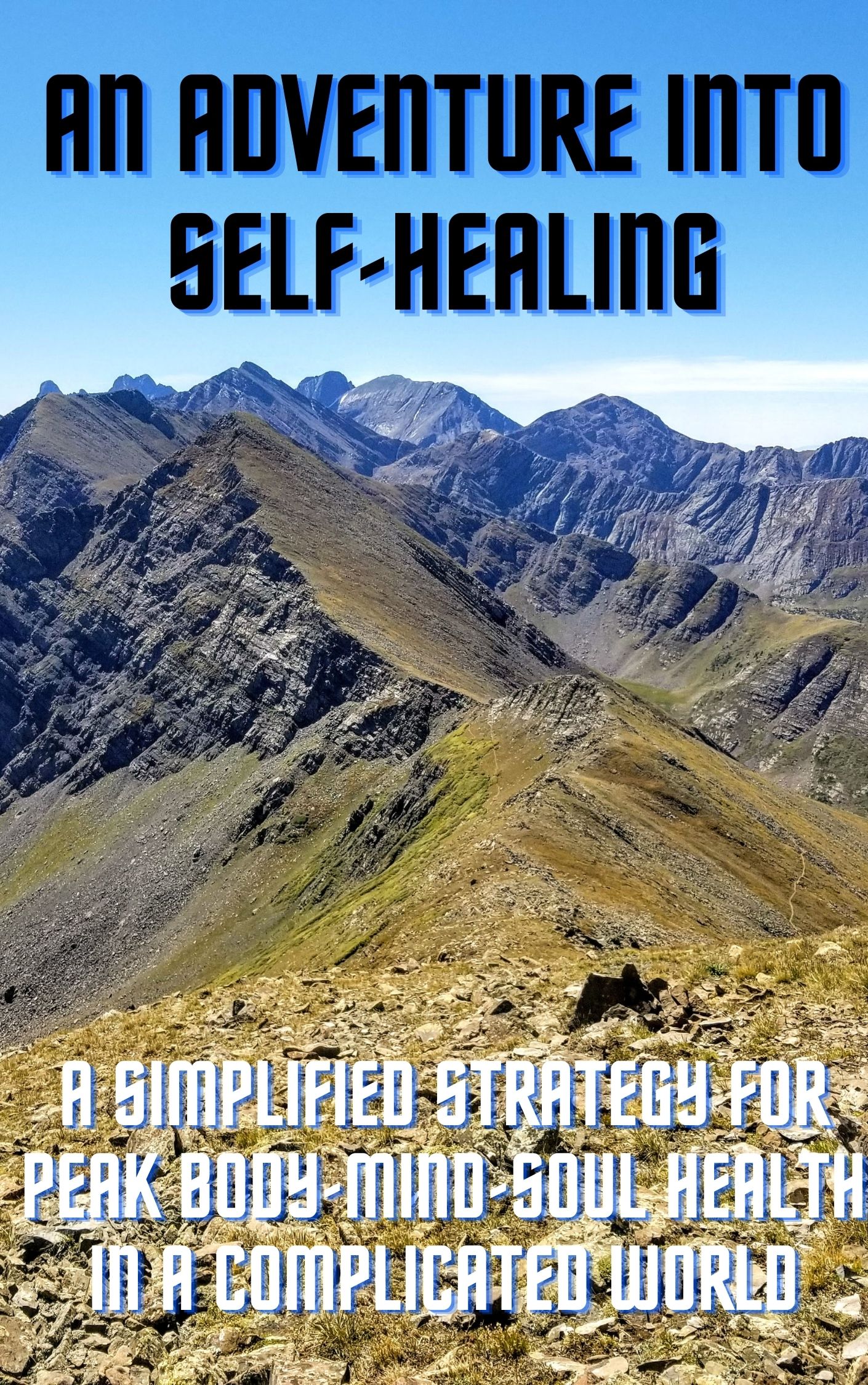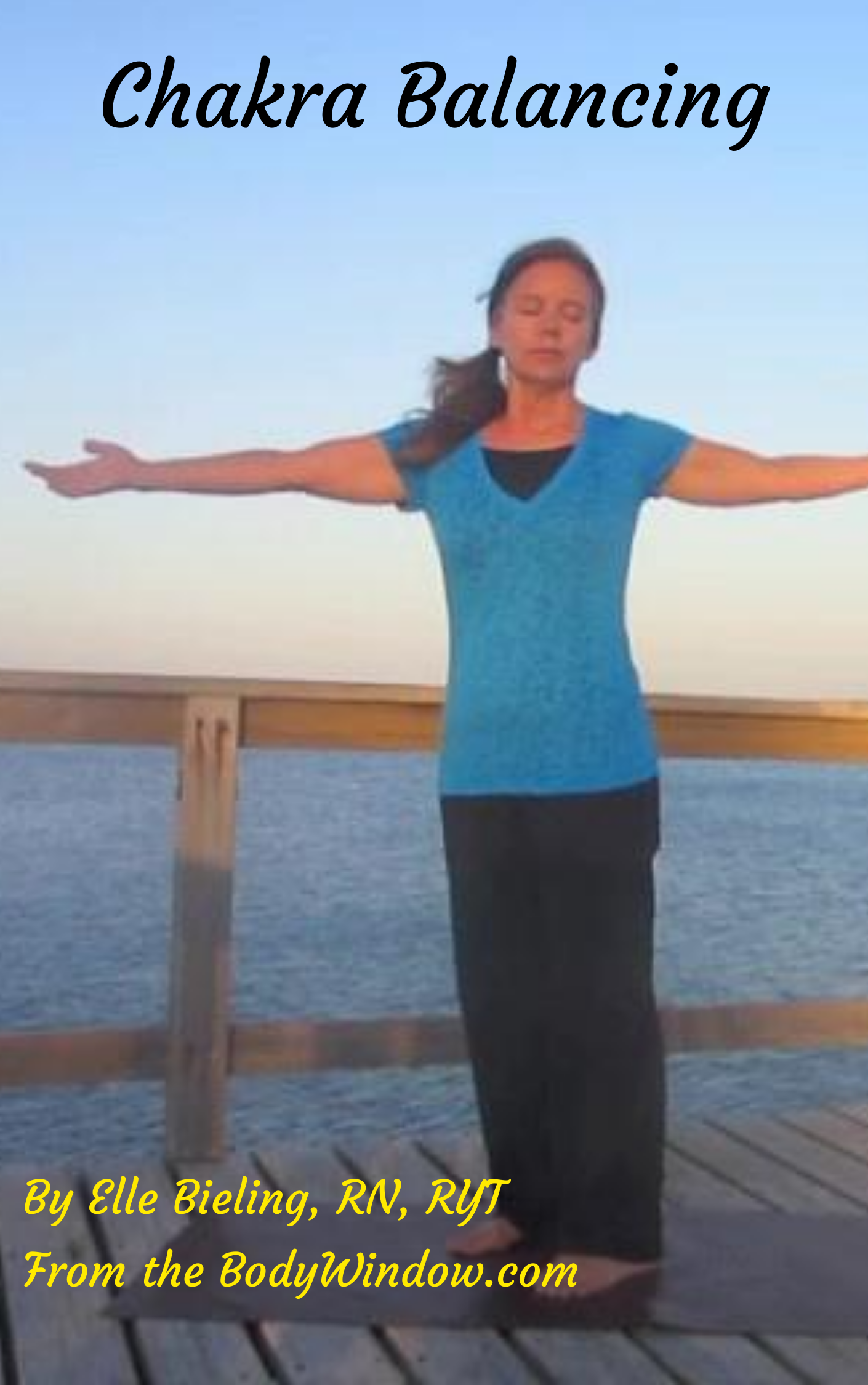Way ~ Through Your Body!
- Home
- Healthy Weight Loss
- Healthy Diet
Simple Solutions to a Healthy Diet and a Balanced Diet
With all the information about food bombarding us, how can I know what is a healthy diet? How can I simplify my diet?
‘In order to see ourselves, we must rely on reflection.’ ~ Stephen Cope
Plain and simple, if you eat a diet loaded with a variety of different and deeply colored fruits and vegetables, and a diet low in processed carbohydrates and sugar, you can be healthy. A diet of whole and unprocessed foods is always the best. This is a healthy diet.
Not only will you simplify your life and lower your stress over food, but you can also save yourself tons of money on vitamins.
If you need to spend your money so badly on your health, my advice would be to spend it on a retreat that teaches you how to reconnect with your inner being to find health.
The Body Window's Self-Guided Healing Course is Now Reduced to only 19.95 USD!
Click here to learn more about how this healing course can change your life!
Another appropriate way to spend your
money is on early detection of disease and screening tests.
Besides, I am not sure that anyone has done a comprehensive study on healthy octogenarians and above, without chronic disease to measure their levels of stress and their attitudes toward life - a study that would try to factor in the emotional and spiritual aspects of health.
Does this have more to do with their longevity or was it their healthy eating or which vitamins they took? Such variables in a study are hard to control.
Or was it whether or not they felt a purpose in life, or that they were living life fully and spiritually instead of just focusing on what they thought was a healthy diet?
Was it that they knew how to give love and felt love in return? These are all variables in living a long and healthy life.
I once asked a patient of mine, whom I was caring for in his home, so that he could die at home instead of a nursing home, if he felt that life had been worth living? Did he find his true calling? He stared at me blankly, never said a word in response. What a shame! He never even said, ‘Yes, I had great joy in my life, and great love.’ Or ‘I had two great sons, of whom I am very proud!’
Nothing said, nothing at all. I thought to myself, I will never want to live a life where at the end, I cannot say that I gave it my best, and I felt One with God and served others where I could. He most likely never had a reflective moment in his life.
I believe that you should strive for health through food and nutrition, but you need to take care not to make it more of a stressor than you need. I am all about a simple life. A whole food diet of fruits, vegetables, and whole grains is very important to provide you with antioxidants.
Lean protein sources, meats and fish or vegetable protein are also paramount to balance the diet. Nuts, legumes, soy, eggs and non-fat dairy and heart healthy fats also round out the diet.
The dairy part is often refuted among various health experts. If your intuition leads you to no dairy, you may want to consider taking calcium supplements at the advice of your doctor or nutritionist. Many adults are intolerant of dairy products due to lactose intolerance.
All of these components make up a healthy diet.
Avoid the "Twin White Devils"
You must also cut out the "white stuff," foods with processed white flour and white sugar. My husband calls them the Twin White Devils! Also think processed. Any food that is processed should be eaten infrequently.
When going to the grocery store, avoid going down the isles and instead buy the majority of your foods as you go around the periphery of the store. The isles are where all the packaged, processed foods are!
I have heard the saying, ‘If it grows, eat it.’ Sounds great to me and I stick to the outside isles as much as possible.
A healthy diet does not include foods with processed sugar and processed flour. Eat foods with these items only occasionally.
My father-in-law says that there are only two types of foods that Americans think are good to eat: Foods with a combination of sugar and grease, or foods with the combination of salt and grease! What a truism! If our saturated fat-laden, processed foods don’t come with a bunch of sugar or salt, we don’t think it’s very good.
Plus it really bothers me that the inexpensive foods are often the most processed! Makes eating a healthy diet on a budget more of a challenge. But fortunately, beans, legumes and whole grains are often inexpensive if you are willing to buy them in bulk rather than in cans and processed box mixes.
I love fruit as a snack, when I am craving sweets (when there is something else going on in my life that needs fulfilling). Fruit is truly nature’s candy.
Just be aware of the ‘starchy’ fruits as well, like bananas, if you are trying to lose weight. They pack a much bigger calorie punch than a peach or an apple. But go ahead and eat a banana if it will keep you from gorging on cookies. A healthy diet includes all whole foods.
Just beware of eating too much natural sugar (fructose) in fruits to satisfy your sweet cravings. Some experts associate eating too much fructose with elevated cardiovascular risk by raising your bad fats in your blood. You can get a lipid profile to see if this is true.
Keep it Raw
Try to eat your vegetables and fruits mostly raw. Do not peel off the valuable vitamins in and under the skins! I never could understand why our culture pays tons of money for synthetically made vitamins, and then proceeds to peel every vegetable and by doing so, we throw away the most nutritional part of the plant.
Baby carrots, washed and peeled in the bag are the worst! Buy the whole carrots and scrub them instead of peeling them. Eat the potato skins and other vegetable skins whenever possible.
A healthy diet involves a lot of fiber and the skins of fruits and vegetables are the best source. A healthy diet with a lot of raw veggies and fruits also cures constipation. The bulk in fiber also helps you feel full.
We also cook our veggies to death, and then proceed to throw away the water they were cooked in. Tossing out the water in cooked vegetables just throws their nutrition down the drain. It is much better to steam the veggies for a healthy diet.
Keep it Balanced
I am also a firm believer in balancing protein with carbohydrates and heart-healthy fat in every meal or 40-30-30 you may have heard:
- 40 percent carbohydrates
- 30 percent protein
- 30 percent fat
I use this as a rough guide and have been very successful at keeping my weight at a healthy level. If you eat a lot more carbohydrates in your diet than 40 percent, just switching to this balance alone may be enough for a weight loss. Many people are totally unaware of how many carbohydrates they really eat.
I believe that the single most important ingredient in healthy weight loss, even more important than getting the correct balance, is simply eating less!
I have had great success with a flexible, intermittent fasting program. It is the only thing that now saves me from the middle-age bulge! Please see Healthy Weight Loss for more information on this!
Carbs:
Instead of processed carbohydrates and starchy foods, the 40 percent carbs in a healthy diet should mostly be in fruits and vegetables with a smattering of whole grains (only if you are not allergic) and legumes (beans, dried peas, lentils, etc.).
The USDA Food Pyramid has grossly over exaggerated the amount of complex carbohydrates in one’s diet, as a result of the powerful farm lobby. You can go to my article on the food pyramid to learn more about this issue.
History shows us that obesity and dental cavities only began when grains were first introduced into our diets. There is archeological evidence for this.
Indeed, carbohydrates in concentrated amounts like those found in bread, chips, baked goods, crackers and pretzels are associated with addictive behaviors. These are certainly the types of food that you want to keep on eating more and more!
I always try to pay attention to my own carb addiction, but noting those foods that I want to continue to keep eating and eating. I try to avoid those foods and I don't keep them in my house.
Try this for yourself. Try eating only one chip, one cookie or one pretzel. It is almost impossible! The simple fact is that concentrated carbs are addictive - period! If you want to get lean, cut out the complex carbs. Bodybuilders have known this forever!
How Much Food Can I Eat?
I wish that I could tell you to listen to your body and only eat when you are hungry and stop when you are full. This is unrealistic instruction, however in an age of emotional eating and disconnectedness with the body-mind-soul.
Most of us have totally lost our ability to listen to our bodies to tell us our status regarding food.
What has always worked for me is to use the 40-30-30 mix as a rule of thumb - 40 percent carbohydrates, 30 percent protein and 30 percent fat. What this means is at each meal eat a fist-sized serving of a lean protein source, with two fist-sized servings of vegetables and/or fruit.
Portion size control is important in a healthy diet. Use your fist size, not the fist size of an elephant! If you eat a starchy vegetable with a high-glycemic index, like corn, peas, winter (yellow) squash or potatoes, only eat one fist-sized serving of your vegetable/fruit portion at that meal.
If you eat a serving of whole grain in your meal, the same rule applies, so try to load up the most on the low glycemic vegetables, or only eat the high-glycemic ones more sparingly. You will get full because it is a high fiber diet and it will be hard to overeat.
As an added benefit when you eat low glycemic vegetables, you will eat fewer calories and you will see a healthy weight loss. To keep you feeling sated or full, add in some healthy fat. Add a few slices of avocado, some nuts or a drizzle of olive, canola oil or other non-saturated fat-based dressing on your veggies.
Fats are Necessary Macronutrients
Eating fat does not make you fat. Eating too much of anything makes you fat! So if you are a believer that fat is the enemy, the rules have changed. Fats must be included in a healthy diet.
Too many carbohydrates, when out of balance with the rest of your diet can really make you fat. Too many carbohydrates eaten in the diet is what spikes your insulin to create insulin-resistance over the course of time. Excessive carbohydrate intake beyond what the body needs gets converted and stored as fat in your body!
Too many carbohydrates in the diet elevate cholesterol as well. Eating foods with cholesterol does not raise your cholesterol. Eggs have gotten a bad rap but they are an incredible source of nutrients especially if you eat fresh, free range ones. You will know them by their deep orange yolks, instead of the pale yellow seen in commercial eggs.
Remember, too many carbs elevate your cholesterol.
Without fat in the diet, you remain hungry all the time. A healthy diet includes healthy fats that contain necessary nutrients. Just remember that fat calories pack a much bigger calorie punch than protein and carbohydrates, more than twice as much. That is mostly why fat calories have gotten such a bad rap.
A little fat goes a long way, so still use it sparingly. The 30 percent fat needs to be heart healthy fat – unsaturated fat like that found in cold-water fish, nuts, avocados, olive oil, and canola oil and most plant fats. Give yourself a handful of nuts or olives (not an elephant’s handful!) and a tablespoon of oil or dressing or one half an avocado. A healthy diet includes fats from plant sources.
Saturated fats are OK to eat in moderation. Those are the animal fats found in red meat, milk, butter and eggs. Don’t load up on saturated fats – just enjoy them in moderation.
Trans-fats in current studies are associated with all sorts of evils. Think processed again. Trans-fats are engineered fats and do not come from natural sources. Anything that humans have fabricated to make into something supposedly better than nature, for whatever reason, has almost always failed in the long run for a healthy diet.
Remember another old 70’s commercial “It’s not nice to fool Mother Nature!” They were trying to sell us Chiffon Margarine as a healthy alternative to butter. Well, it IS true – it is NOT nice to fool Mother Nature, because Chiffon no longer exists. A healthy diet is non-processed and non-engineered!
Check your labels of your food carefully. In the USA many labels now say, "no trans-fats."
High Protein?
A lot of experts would call the 40-30-30 healthy diet a high protein diet. Do not be fooled. It takes a large volume of low-glycemic fruits, vegetables and whole grains to balance the protein in this diet.
In fact, the volume of low-glycemic carbs is twice as much as the protein, if the protein source is from animals. The key to the balance is eating low glycemic fruits and vegetables. If the protein is from a plant source such as soy, the volumes of low glycemic carbs are more equal.
In other words, you can eat twice as much volume from a plant-based source of protein versus an animal-based source and still approximate the 40-30-30 balance. If the carbohydrates are from high-glycemic sources (most processed foods) then the volume is the same as from animal sources of protein to make the balance.
If you find that by eating this way you are still hungry, try adding more fat to your diet. Yes, you heard me right – more fat. Put a small amount of peanut butter on your raw veggies or eat two handfuls of nuts or olives with each meal. Understand that it will take awhile for you to detoxify from sugar and too many processed carbs, too.
Also try drinking more water, or hot tea (especially green, white or black tea). It will help you feel full too. I love to have a cup of mint-flavored or jasmine-flavored green tea at my side whenever I can – hold the sugar. Non-herbal teas are associated with health due to the antioxidants in them. Tea comforts me and can often replace my emotional need to eat.
Reduce Your Food Stress by Approximating
Do I follow the 40-30-30 rule each and every single meal, every time? No! I allow for my comfort foods and include my occasional soul food like ice cream or other sweets. I do this at least once or twice a week, because I cannot let myself feel deprived.
Deprivation only leads to binging. When I am especially blue, I will eat more comfort foods, especially in the wintertime. But I never gorge on anything. I always manage my comfort food portions.
I don’t stress over exact meal proportions either. I don’t count anything. Most likely I eat more than 40 percent carbohydrates on a regular basis. It is often on more starchy fruits and vegetables, or the extra portion of bulgur, rather than pasta and bread. There is much more nutrition in a banana or a potato with the skin on than in white pasta or white bread.
I always use the 40-30-30 rule as my ideal. That way if the pounds start to creep up, I know I am eating too many carbohydrates and sweets or processed food, and immediately cut back. My weight always returns to my baseline if I do this.
I do weigh myself frequently, so I can keep tabs on any weight change and act immediately if needed to choose more healthy foods and return to a more healthy diet.
Red, Red Wine and Chocolate!
I also add to my diet a glass of red wine almost every night. I thank God that the fruit of the vine may be on the list of healthy foods, because it contains an antioxidant called resveratrol. But be careful!
Women cannot tolerate more than one glass (4 ounces - very small amount indeed) of wine a day, and men cannot tolerate more than 2 glasses a day, for overall maintenance of health (Or any alcoholic beverage for that matter). Small amounts of wine can be included in a healthy diet.
Don’t start drinking if you currently do not.
In addition I add dark chocolate, a few ounces to my diet, almost every night. I don’t consider it as part of my treats, because of the antioxidant content in dark chocolate.
I consider eating dark chocolate as part of a healthy diet! Again, one of my great loves is now associated with health! I could get rid of the sugar by eating unsweetened baker’s chocolate, but that would take away the pleasure principle, and it just happens to taste disgusting to me.
I do eat at a minimum, 70% Cacao (bars in the baking section of the supermarket) and try to find 80% Cacao. This makes me feel less indulgent and it still tastes pretty good.
Know the Glycemic Index of Foods
It is important to learn the glycemic index of different foods, to better understand the problem of insulin resistance, and its importance in managing your weight and preventing diabetes as you age.
Simply stated, the more sugar and starch (that can be converted to sugar in your body when eaten) in your food choices, the higher the glycemic index and the worse it is for you.
Processed white flour and white sugar, i.e., the “white stuff” - the “Twin White Devils” should be avoided in the diet. A healthy diet includes none or very little of the White Devils.
Insulin-resistance is a real problem in the American population, and diabetes is becoming a national pandemic. Learning about the glycemic index of food will help you to learn healthy eating and how to maintain your blood sugar at healthy levels. For you to have a healthy diet you must be aware of the glycemic level of different foods.
Or just use my rules of thumb: If you want to keep it simple, just avoid anything with processed sugar and processed flour. This type of eating excludes almost all snack foods. If you avoid these ingredients, I promise your energy and feeling of well being will improve.
The Key to Weight Management
If I am off emotionally and feel the need to eat carbs, I try to indulge more on the high-glycemic vegetables and fruits than on sweets, to get my feel-good serotonin, one of the endorphins.
Foods like bananas, potatoes, winter squash, corn and peas are in a healthy diet, as opposed to chips, cookies or cakes. Or I eat more than a few ounces of 70% or more cacao, dark chocolate.
Most importantly, I try to understand what is bothering me, by doing more meditation and intuitive movement. I try to understand my body-mind-soul issue. There is always a reason why we overeat and it is mostly due to emotional factors.
Self-awareness
is the key to weight management and weight control! By going inward, I
am usually able to bring myself Peace and understand where my current
issues lie. I step up the positive affirmations for health and turn once again to gratefulness to God and the Universe for everything: All I am, and all I have! It is enough!
Summary of Keys to a Healthy Diet
- The diet I recommend is from the University of Michigan. Please read my food pyramid article for more information. Their Healing Foods Pyramid from the Department of Integrative Medicine is the best healthy diet I have found.
- Approximate the 40-30-30 rule for balance and portion control.
- Apply healthy food choices by eating low-glycemic index foods and unprocessed, whole foods.
- Reconnect with yourself through your choice of exercise for intuitive movement to make it joyful, meditative and fun.
- Start a meditation practice and say affirmations for health and your overall health and well-being will improve dramatically!
- If you need a healthy weight loss plan, please contact me, to see if I can be of help!
- Never forget the power of aerobic exercise for your healthy living plan, as well. Learn my body-mind-soul way of doing it too, by clicking on the link. This is healthier than trying to do so much that you become an exercise bulimic, punishing yourself for the food you ate.
- Avoid any kind of colon cleanse, or body cleanse that offers you fantastic results. They don't exist.
If you follow these keys, your newly found healthy diet will inevitably lead to healthy weight loss. I promise! If you have high blood pressure, high cholesterol and newly diagnosed adult-onset diabetes, these will improve as well.
This is self-care extraordinaire! Just make a decision now to do it! Start your healthy diet now!
Simple is Better.
Whole is Better.
Raw and Unpeeled is Better.
Back to Mother Nature is Better.
Remember, if you have special needs, are under persistent stress or have a chronic illness, it is always best to get a complete and personal consultation from a holistic nutritionist.
Can't find what you're looking for? Search this website:
Support This Website and Its Mission
Thank you so much for considering a donation to help support this website. I appreciate your thank-you for access to so much free information. If you feel you have been blessed by this website, thank-you for your donation! I promise, that I will continue to provide you with lots of information and pay it forward to all in whatever way I can!
© Copyright 2009-2025, by Elle Bieling, BodyWindow.com
All Rights Reserved
We also hereby confirm, as stated in our Privacy Policy, that we do not sell personal information of any kind.
Protected by Copyscape Plagiarism Checker ~ Do not copy content from this page.
Information on this website is not intended for medical advice. See your health care provider for any health concerns. By using this website and/or practicing any yoga postures, foam rolling exercises or other physical movements contained herein, you are agreeing that you are in good health, cleared by your healthcare professional to participate in physical activities and you release The Body Window from any liability involved in the practice.




